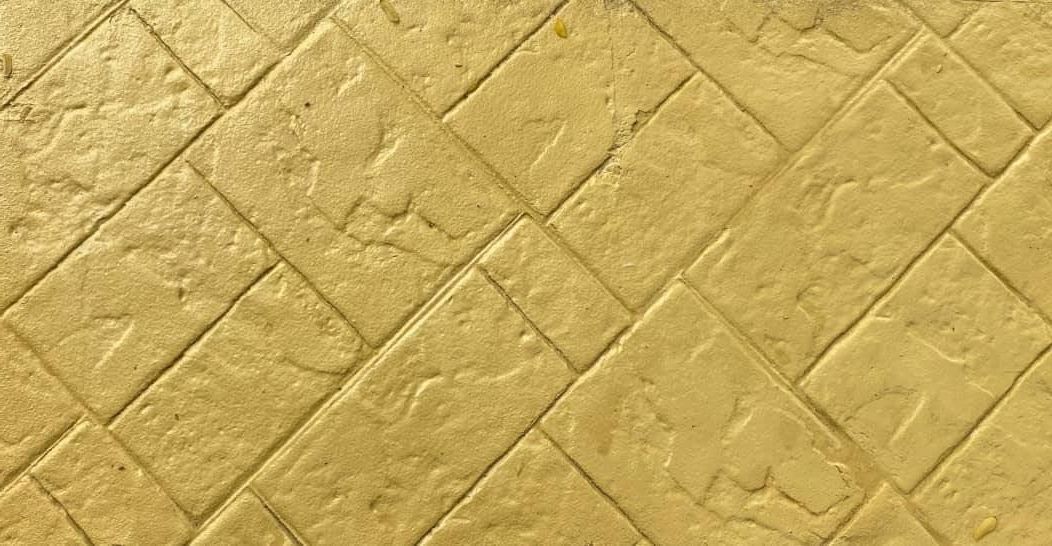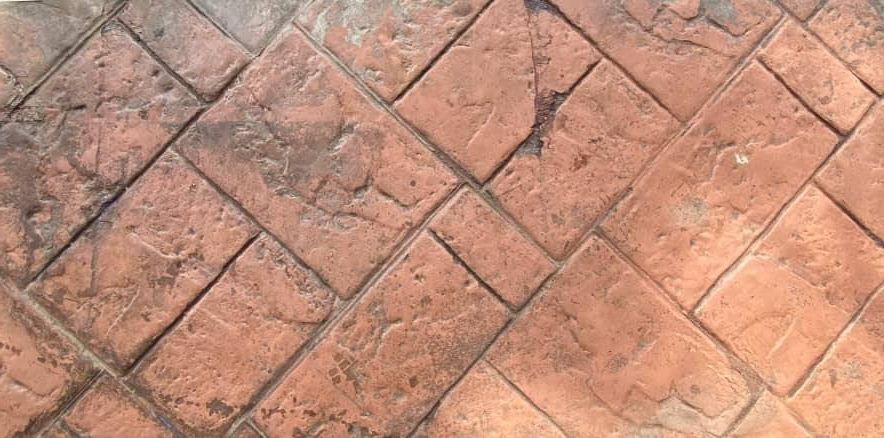DECORATIVE MIRCO OVERLAY SYSTEM
MASTERPAV Decorative Micro Overlay System is a polymer-modified cementitious system that is specifically designed
to enhance the appearance of both interior and exterior spaces. The system is designed to be as thin as 3mm. Create
a seamless surface with this highly durable and versatile system to elevate the visual appeal of the surrounding spaces.
MASTERPAV RJ500 REJUVENATE is a two-part polymer-modified cementitious mixture (PMC) used to resurface old and new concrete for durable aesthetic performance. It is specially designed to be sprayed like a thin coat by a hopper gun to rejuvenate existing stamped concrete or plain concrete. The original stamped pattern is not affected by rejuvenated materials. The system comprises a specially formulated liquid polymer (MASTERPAV E4 Emulsion) and a cementitious powder (MASTERPAV DF500 Spraycoat dry mix) with a variation of colour. A dual-tone effect can be achieved by staining with a secondary colorant using a hand pump sprayer or by using a roller or brush.
BENEFITS
Cost effective
Maintains the texture of stamped concrete
Compatible with MASTERPAV DF500 Rejuvenate, MASTERPAV WB100 Color Stain, and MASTERPAV AS3.0 Anti-Slip Sealer
Durable
Easy to maintain
The product's versatility enables a wide range of effects.
Wide range of colours
SYSTEM INFORMATION
PACKAGING
MASTERPAV DF500 Spraycoat Drymix
20 kg/bag
MASTERPAV E4 Emulsion
20 Lt/pail
MASTERPAV WB100 Color Stain
1 Lt/bottle
MASTERPAV AS3.0 Anti Slip Sealer
1 Lt, 5Lt & 20Lt/pail
CONSUMPTION & COVERAGE
MASTERPAV DF500 Spraycoat
1.3 - 1.5 kg/m²/coat
MASTERPAV WB100 Color Stain
8 - 10 m²/Lt
MASTERPAV AS3.0 Anti Slip Sealer
4 m²/Lt
INSTRUCTION FOR USE
BASE SLAB (BY OTHERS)
The concrete shall be designed to withstand all structural, thermal, and mechanical stresses and loads that occur during its service.
SURFACE PREPARATION
The concrete surface to receive the MASTERPAV RJ500 REJUVENATE shall be thoroughly cleaned with a high-pressure cleaning or vacuum machine after mechanical grinding for better adhesion.
SURFACE PRIMING
1) The clean surface should be primed with MASTERPAV E4 Emulsion,
diluting with water at a ratio of 1:1. It can be applied with a roller or brush.
2) Additional coats may be required if the coat applied is absorbed fast.
3) Allow the primer to dry or become tack-free before adding any other additional coats.
SPRAY COAT: MASTERPAV DF500 SPRAYCOAT
1) Note: Ensure that the surface temperature ranges from 25°C to 35°C before mixing begins.
2) Add 4.3 – 4.5 litres of the MASTERPAV E4 Emulsion into a clean 20 litres plastic pail.
3) Add 10kg MASTERPAV DF500 Spraycoat dry mix slowly while mixing the liquid until homogeneous by using a mechanical mixer.
4) Recommended mixing speed 500-600 rpm.
5) Allow 1 minute for the materials to settle down.
6) The mixed materials are then poured into a hopper gun and sprayed to finish.
(OPTIONAL) SECONDARY COLOURANT: MASTERPAV WB 100 COLOR STAIN
Where required for a dual-tone finishing, it is recommended to apply a secondary highlight colorant (color stain) on top of the main sprayed coating. It is best to apply the secondary colorant after the main sprayed coating is in tack-free condition. Tack-free drying time is subject to environmental conditions.
SEALER APPLICATION
1) By using a suitable roller, apply 1 coat of MASTERPAV AS3.0 Anti Slip Sealer and allow it to dry before applying an additional coat of sealer (optional).
2) After sealing, it is recommended that the sealed surface shall be protected from:
Foot traffic for a minimum of 48 hours after application;
Light vehicle traffic for a minimum of 7 days after application;
RECOMMENDATION & SUGGESTION
1) For outdoor application, allow it at least 24Hr or 1 day curing before applying any finishing topcoat on top of it.
2) For indoor application, allow it at least 48 – 72Hr or 2-3 days curing before applying any finishing topcoat on top of it.
3) Foot traffic for a minimum of 48Hr after application;
4) Light vehicle traffic for a minimum of 7 to 10 days after application;
5) Check suitability before allowing any traffic.
REFER TO PRODUCT
VIDEO






